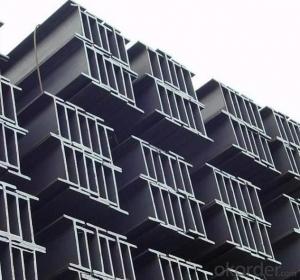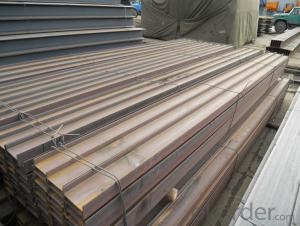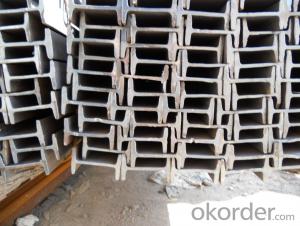Japanese Standard SS400 H beam with High Quality 446mm-498mm
- Loading Port:
- Tianjin
- Payment Terms:
- TT OR LC
- Min Order Qty:
- 100 m.t
- Supply Capability:
- 15000 m.t/month
OKorder Service Pledge
OKorder Financial Service
You Might Also Like
Item specifice
Specifications of Japanese Standard SS400 H beam with High Quality 446mm-498mm:
1. Standard: JIS 3192
2. Grade: SS400 or Equivalent
3. Length: 10m, 12m as following table
4. Invoicing on theoretical weight or actual weight as customer request
5.Payment: TT or L/C
Size and Mass of Japanese Standard SS400 H beam with High Quality 446mm-498mm:
| Size(mm) | Mass (Kg/m) | Size (mm) | Mass (Kg/m) |
| 458*417*30.0 | 415 | 446*199*8.0 | 65.1 |
| 498*432*45.0 | 605 | 450*200*9.0 | 74.9 |
Packaging & Delivery of Japanese Standard SS400 H beam with High Quality 446mm-498mm for Building Structures:
1. Packing: it is nude packed in bundles by steel wire rod
2. Bundle weight: not more than 3.5MT for bulk vessel; less than 3 MT for container load
3. Marks:
Color marking: There will be color marking on both end of the bundle for the cargo delivered by bulk vessel. That makes it easily to distinguish at the destination port.
Tag mark: there will be tag mark tied up on the bundles. The information usually including supplier logo and name, product name, made in China, shipping marks and other information request by the customer.
If loading by container the marking is not needed, but we will prepare it as customer request.
4. Transportation: the goods are delivered by truck from mill to loading port, the maximum quantity can be loaded is around 40MTs by each truck. If the order quantity cannot reach the full truck loaded, the transportation cost per ton will be little higher than full load.
5. Delivered by container or bulk vessel.
Usage of Japanese Standard SS400 H beam with High Quality 446mm-498mm:
(1). for the plant, high-rise building construction
(2). for the bridge, shipment building
(3).for lifting and transportation machinery, equipment manufacturing base building
(4). for the support, foundation pile manufacturing
FAQ:
Q1: Why buy Materials & Equipment from OKorder.com?
A1: All products offered by OKorder.com are carefully selected from China's most reliable manufacturing enterprises. Through its ISO certifications, OKorder.com adheres to the highest standards and a commitment to supply chain safety and customer satisfaction.
Q2: How do we guarantee the quality of our products?
A2: We have established an advanced quality management system which conducts strict quality tests at every step, from raw materials to the final product. At the same time, we provide extensive follow-up service assurances as required.
Q3: How soon can we receive the product after purchase?
A3: Within three days of placing an order, we will arrange production. The shipping date is dependent upon the quatity, how many sizes you want and the plan of production, but is typically 1 month to 2 months from the beginning of production.
Images of Japanese Standard SS400 H beam with High Quality 446mm-498mm:
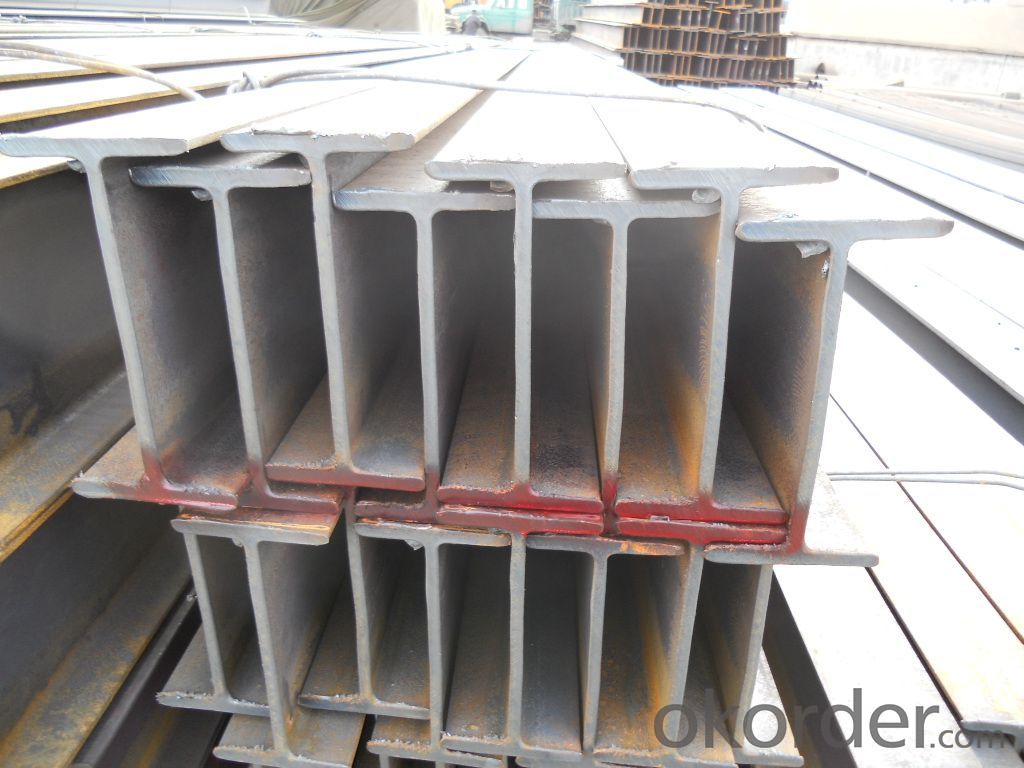
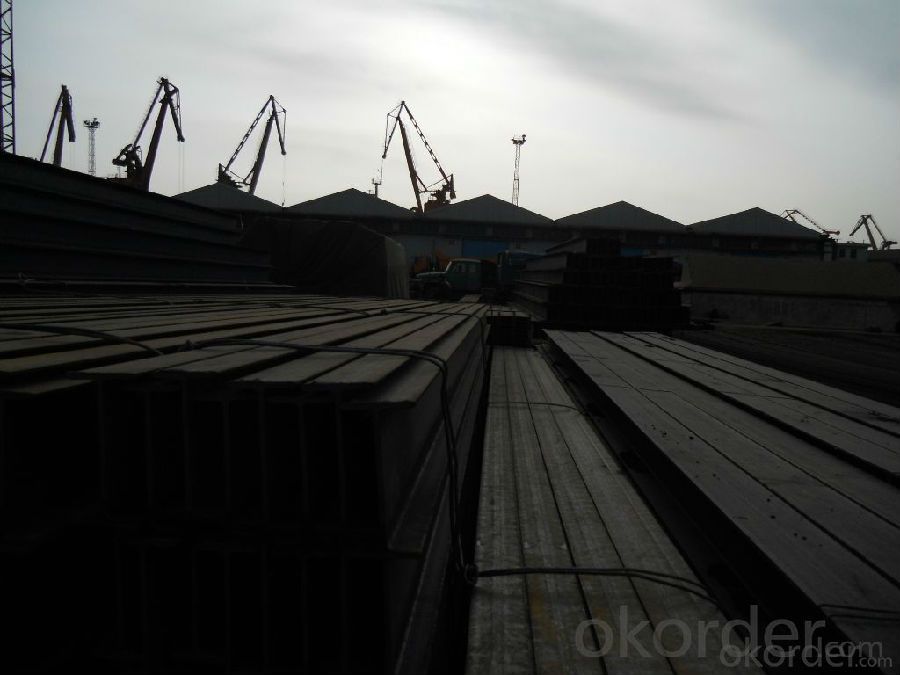
* If you would like to get our price, please inform us the size, standard/material and quantity. Thank you very much for your attention.
- Q:Can steel H-beams be used in marine environments?
- Steel H-beams are suitable for marine environments, but they need to be protected and maintained to prevent corrosion. Marine environments are known for their high moisture levels, exposure to saltwater, and harsh weather conditions, all of which can speed up the corrosion process of steel. To reduce these risks, steel H-beams used in marine environments should be constructed from corrosion-resistant materials like stainless steel or galvanized steel. Stainless steel is particularly well-suited for marine environments because of its strong resistance to corrosion and rust. It contains a significant amount of chromium, which develops a thin, passive layer on the surface of the steel, shielding it from the corrosive effects of saltwater and moisture. Stainless steel H-beams can withstand the tough marine environment without significant deterioration, making them a popular choice for piers, bridges, and offshore structures. Galvanized steel is another viable option for marine environments. It is carbon steel that has been coated with a layer of zinc, acting as a sacrificial barrier against corrosion. The zinc coating corrodes first, protecting the underlying steel from direct exposure to saltwater and moisture. However, galvanized steel may not be as long-lasting as stainless steel in highly corrosive marine environments, and the protective zinc coating can wear off over time, necessitating periodic maintenance and reapplication of the coating. Regardless of the steel type used, regular maintenance and inspections are crucial to ensure the integrity of H-beams in marine environments. This involves regular cleaning to eliminate salt deposits, repainting or re-galvanizing as necessary, and promptly addressing any indications of corrosion or damage. Additionally, proper design considerations should be taken into account to accommodate the specific challenges presented by marine environments, such as tidal forces, wave impact, and temperature fluctuations. In conclusion, steel H-beams can be used in marine environments if they are made from corrosion-resistant materials like stainless steel or galvanized steel and are adequately maintained. With the appropriate precautions, these beams can endure the harsh conditions of marine environments, making them a dependable choice for various marine structures and applications.
- Q:How do steel H-beams perform in seismic zones?
- Steel H-beams are widely used in construction, including in seismic zones, due to their excellent performance and strength. In seismic zones, where earthquake activity is more prevalent, it is crucial to use materials that can withstand the forces generated by seismic events. Steel H-beams are specifically designed to handle these forces. Their shape, with a vertical web and horizontal flanges, provides excellent resistance to bending and torsion, making them highly effective in seismic zones. The vertical web acts as a support, distributing the load evenly across the beam, while the horizontal flanges resist bending and provide stability. Additionally, steel, as a material, has excellent ductility, which is its ability to deform without breaking. When subjected to seismic forces, steel H-beams can absorb and dissipate energy through their ductility, reducing the risk of sudden failure. This property is crucial in seismic zones, as it allows the structure to undergo some deformation while maintaining its overall integrity. Moreover, steel H-beams are often used in combination with other seismic-resistant techniques, such as moment-resisting frames or base isolation systems, to further enhance their performance. These systems work together to minimize the impact of seismic forces on the structure, ensuring the safety of the building and its occupants. In conclusion, steel H-beams perform exceptionally well in seismic zones. Their design, material properties, and compatibility with other seismic-resistant techniques make them a reliable choice for construction in areas prone to earthquakes.
- Q:Use H section steel to make the beam, the span of 8 meters, the floor slab, what's the minimum H steel? What's the model?
- It is recommended to use 300*200*8*12HM H steel
- Q:How do you transport and install steel H-beams?
- To ensure safety and efficiency, careful planning and coordination are necessary when transporting and installing steel H-beams. The following steps outline the process: 1. Determine the weight and dimensions of the steel H-beams to be transported. This information is vital for selecting the appropriate transportation equipment and ensuring safe loading and unloading. 2. Choose suitable transportation equipment based on the weight and size of the H-beams. Specialized equipment like flatbed trucks, trailers, or cranes may be required. Ensure that the equipment is in good condition and capable of handling the load. 3. Secure the beams for transit using appropriate methods to prevent shifting. This may involve using chains, straps, or binders to secure the beams to the trailer or truck bed. Consider using protective materials like padding or covers to prevent damage. 4. Plan the transportation route, taking into account road conditions, height restrictions, weight limits, and permits. Avoid obstacles such as low bridges or narrow passages that may hinder safe transportation. 5. Coordinate with the transportation company, providing them with accurate information about the beams' weight, dimensions, and any special handling instructions. Ensure they understand the specific requirements for transporting H-beams. 6. Safely unload the H-beams at the installation site using appropriate equipment like cranes or forklifts. Make sure the unloading area is clear of obstructions and provides enough space for maneuvering. 7. Follow the manufacturer's instructions or engineering drawings to correctly install the H-beams. This may involve using cranes or lifting equipment to lift the beams into position, aligning them accurately, and securing them with bolts or welding. 8. Prioritize safety throughout the transportation and installation process. Provide workers with personal protective equipment (PPE), conduct safety briefings, and follow established safety protocols. By following these steps and collaborating with experienced professionals, the safe and efficient transportation and installation of steel H-beams can be ensured.
- Q:Are steel H-beams resistant to termites?
- No, steel H-beams are not resistant to termites. Termites are known for their ability to infest and damage wood, as they feed on cellulose present in natural materials. Since steel H-beams are made of metal, they do not contain cellulose and are not susceptible to termite infestation. Therefore, steel H-beams are an ideal choice for construction projects in termite-prone areas, as they provide a strong and durable alternative to traditional wooden beams.
- Q:What are the different connection details for steel H-beams?
- There are several different connection details for steel H-beams, which vary depending on the specific application and design requirements. Some common connection details include bolted connections, welded connections, and moment connections. Bolted connections involve using bolts and nuts to connect the beams together, providing flexibility for adjustment and disassembly. Welded connections involve fusing the beams together using welding techniques, providing a seamless and rigid connection. Moment connections are a type of welded connection that allows for the transfer of bending moments between beams, providing enhanced structural stability. Ultimately, the choice of connection detail depends on factors such as the load requirements, structural design, and construction methods being employed.
- Q:How do steel H-beams perform in sports arena construction?
- Sports arenas commonly use steel H-beams for their outstanding structural performance. These beams offer superior strength and load-bearing capabilities, making them perfect for supporting the heavy loads and stresses that sports arenas encounter. The design of steel H-beams promotes even weight distribution, enabling them to evenly distribute loads from the roof, lighting systems, and other equipment in the arena. This ensures the building's structural integrity and prevents any potential failures or collapses. Furthermore, steel H-beams possess a high resistance to bending and twisting forces, making them suitable for withstanding the dynamic loads generated by sporting events like basketball games or concerts. They also exhibit excellent fire resistance, which is crucial for ensuring the safety of both spectators and athletes. Moreover, steel H-beams are versatile and can be easily customized to meet the specific design requirements of sports arenas. Architects and engineers can fabricate them into various lengths, sizes, and shapes, allowing for the creation of innovative and aesthetically pleasing structures. Additionally, steel H-beams have a long lifespan and require minimal maintenance, making them a cost-effective choice for sports arena construction. They are also recyclable, aligning with sustainable construction practices. In conclusion, steel H-beams play a vital role in sports arena construction due to their exceptional strength, load-bearing capabilities, resistance to bending and twisting forces, fire resistance, versatility, and long lifespan. These beams ensure the safety and structural integrity of sports arenas, providing a solid foundation for hosting sporting events and other activities.
- Q:Can steel H-beams be used for signage structures?
- Yes, steel H-beams can be used for signage structures. Steel H-beams are known for their high strength and durability, making them suitable for supporting heavy loads, including signage. They are commonly used in construction projects for their structural integrity and ability to withstand various weather conditions. H-beams provide excellent support and stability, making them an ideal choice for signage structures that need to be sturdy and long-lasting. Additionally, steel H-beams can be easily fabricated and customized to meet specific design requirements, allowing for flexibility in creating unique and visually appealing signage structures.
- Q:How do you protect steel H-beams from corrosion?
- There are multiple effective techniques available to safeguard steel H-beams against corrosion. One commonly used method involves the application of a protective coating or paint onto the beams' surface. This coating acts as a barrier, preventing moisture and other corrosive agents from coming into contact with the H-beams. It is crucial to ensure that the coating is applied evenly and thoroughly on all surfaces of the beams, including the ends and any exposed edges. Another approach is to galvanize the steel H-beams. Galvanization entails coating the steel with a layer of zinc, which provides excellent corrosion resistance. The zinc coating acts as a sacrificial layer, meaning it corrodes before the steel, thereby prolonging the H-beams' lifespan. Galvanization can be achieved through hot-dip galvanizing, where the H-beams are immersed in molten zinc, or through electro-galvanizing, which involves applying a zinc coating via an electrochemical process. Regular maintenance is also vital to protect steel H-beams against corrosion. This involves inspecting the beams for any signs of damage or rust and promptly addressing any issues. It is important to remove loose rust or scale from the beam's surface using wire brushes or abrasive pads and then apply a suitable primer or coating to prevent further corrosion in affected areas. Furthermore, ensuring proper drainage around the H-beams is crucial in preventing corrosion. The accumulation of standing water or moisture can contribute to the corrosion process. Therefore, it is essential to design and construct structures in a way that facilitates effective water drainage. Additionally, avoiding contact with other materials that may accelerate corrosion, such as certain chemicals or incompatible metals, is important in protecting the steel H-beams. In conclusion, safeguarding steel H-beams from corrosion involves a combination of preventive measures, including coating application and galvanization, regular maintenance, and proper design and construction practices. By implementing these strategies, the lifespan of steel H-beams can significantly increase, ensuring their structural integrity and durability.
- Q:Can steel H-beams be used in architectural design elements?
- Yes, steel H-beams can be used in architectural design elements. Steel H-beams are widely used in the construction industry for their strength and durability. They are commonly used as structural supports in buildings, bridges, and other large-scale projects. However, they can also be utilized in architectural design elements to create unique and visually appealing structures. The versatility of steel H-beams allows architects to incorporate them in various ways, such as using them as exposed beams, columns, or even as decorative elements. The clean and modern look of steel H-beams can add an industrial or contemporary aesthetic to architectural designs. Additionally, their load-bearing capacity and ability to span large distances make them suitable for creating open and spacious interior spaces. Overall, steel H-beams offer architects a practical and versatile solution for incorporating structural elements into their designs while also adding a unique visual appeal.
1. Manufacturer Overview |
|
|---|---|
| Location | |
| Year Established | |
| Annual Output Value | |
| Main Markets | |
| Company Certifications | |
2. Manufacturer Certificates |
|
|---|---|
| a) Certification Name | |
| Range | |
| Reference | |
| Validity Period | |
3. Manufacturer Capability |
|
|---|---|
| a)Trade Capacity | |
| Nearest Port | |
| Export Percentage | |
| No.of Employees in Trade Department | |
| Language Spoken: | |
| b)Factory Information | |
| Factory Size: | |
| No. of Production Lines | |
| Contract Manufacturing | |
| Product Price Range | |
Send your message to us
Japanese Standard SS400 H beam with High Quality 446mm-498mm
- Loading Port:
- Tianjin
- Payment Terms:
- TT OR LC
- Min Order Qty:
- 100 m.t
- Supply Capability:
- 15000 m.t/month
OKorder Service Pledge
OKorder Financial Service
Similar products
New products
Hot products
Related keywords
